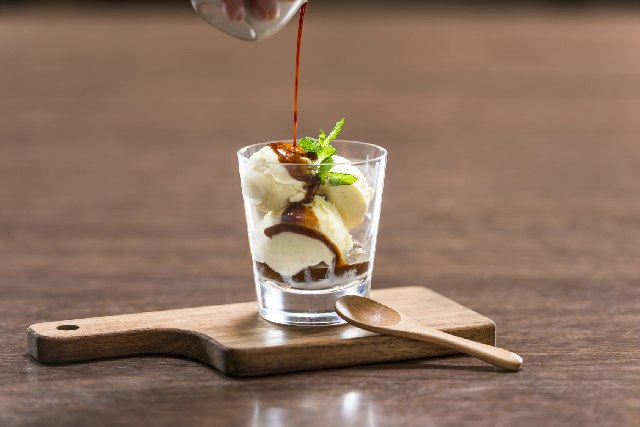Is Italian coffee culture the same as we know it? Shouldn't you add sugar to your coffee?
For professional baristas, please follow the coffee workshop (Wechat official account cafe_style)

In Italy, the image of "Coffee House" is strong. How do you enjoy coffee? There are many popular coffees in Italy, such as espresso and coffee latte, but their preferences are slightly different from those of Italians.
Let's take a look at the Italian coffee culture and its characteristics here.
Authentic espresso Italy
As many people imagine, Italian coffee is also espresso. Coffee machines are always in bars (like coffee shops in Japan), and many people enjoy coffee.
Bar is almost everywhere in Italy, and there are said to be 160000 cases. In addition, there seem to be many bars selling magazines, food, tobacco, etc., as well as coffee processing.
The meaning of "espresso"
This is a kind of espresso, which is established in Japan, but do you know why it is called espresso? This can be understood from the meaning of how to enjoy Italian coffee.
"espresso" means "express train". In other words, it means drinking coffee immediately. In Italy, I asked the coffee in the bar. I wanted to leave the store and drink it slowly. The exact opposite of enjoying a drink at , a Japanese cafe, is to express the word "espresso".
A place to rest. "Bar."

The coffee shop "bar" in Japan is an integral part of Italian life. In a survey, more than 90% of Italians use bars, and it seems that Italian citizens often go to bars and visit coffee before work, lunch and after work.
Moreover, not only in the style of drinking espresso, but also as a place for the exchange of information among intellectuals in the 16th and 17th centuries, it is even playing a social role.
Demand for varistors
Because we often patronize, our baristas who work there must entertain guests with the best coffee and customer service. This is a barista who has not yet become a professional in China, but it is very familiar to the Italians. Recently, arrangements for the use of espresso and foamed milk also seem to be popular.
How to enjoy espresso

In Japan, espresso is thought to be drunk without adding anything, but in Italy it is really different. Many people enjoy different amounts of espresso and sugar. We have customizations of your own choice, such as large quantities, one spoonful of things, and there are no rules. Of course, some people like to drink black coffee.
Espresso and dessert
In addition, in Italy, the word dessert is called "Dolce" and is popular as a staple food paired with espresso.
Enjoy ice cream coffee and Afogado cookies, like baked cookies. He seems to be enjoying the combination of coffee and text messages such as croissant in France.
Different menus depend on the amount of milk.

Coffee lattes and cappuccinos are popular in Japan. These names depend on the content and type of milk in espresso.
Cafe Machiate
Espresso with small steam milk (steamed milk).
Espresso: 60%
Steamed milk: 40%
Hot milk coffee
Put steamed milk and foamed milk in espresso and shake the cinnamon slightly.
Espresso: 30%
Steam milk: 30%
Molded milk: 40%
Cinnamon: a little bit
Coffee mocha
20% espresso, 70% steamed milk, add mocha syrup.
Espresso: 20%
Steamed milk: 70%
Mocha syrup: 10%
Cafe Latte
A lot of steamed milk is poured into espresso. It often pours a little foamy milk on the surface.
Espresso: 20%
Steamed milk: 80%
Cappuccino is what you drink in the morning.

In China, when I drink coffee in the coffee shop in the evening, I often drink cappuccino coffee, but for Italians, it makes them feel uncomfortable.
In fact, for Italians, cappuccino is considered "have a drink in the morning". It seems that some people drink before lunch, but they haven't ordered anything to say in the afternoon.
Like Japanese culture, think of "breakfast" as natto, miso soup and white rice.
Summary of Coffee Culture and function in Italy
I've seen coffee in Italy. How many people don't know that cappuccinos only drink in the morning?
Moreover, although Chinese coffee is a familiar coffee, it seems to be enjoyed in a slightly different way. Italy is committed to "taste" around the world, pursuing the quality and temperature of water and the beans used, which is just a country suitable for being a great coffee country.
By the way, there are also many families that have home coffee machines recently.
Important Notice :
前街咖啡 FrontStreet Coffee has moved to new addredd:
FrontStreet Coffee Address: 315,Donghua East Road,GuangZhou
Tel:020 38364473
- Prev

What are the rumors about Brazilian coffee culture? what is the real Brazilian coffee culture?
For professional baristas, please follow the coffee workshop (Wechat official account cafe_style) Brazil, which is famous for producing coffee beans. Brazilian coffee beans are also distributed in China. Coffee lovers are very familiar with the country, but how do you enjoy coffee in Brazil? Here, we will introduce the coffee culture and its characteristics in Brazil. Coffee is the most consumed food in China.
- Next

The Origin of Kaddura Variety Caturra Flavor expression and characteristics of Kaddura Coffee
For professional baristas, please follow the coffee workshop (Wechat official account cafe_style) Variedad encontrada en Minas Gerais, Brasil, posiblemente originada como una mutacin de un gene dominante del caf Bourbon. The Kaddura variety was found in the Brazilian state of Minas Gerais and may have originated from a variety like Bourbon.
Related
- Beginners will see the "Coffee pull flower" guide!
- What is the difference between ice blog purified milk and ordinary milk coffee?
- Why is the Philippines the largest producer of crops in Liberia?
- For coffee extraction, should the fine powder be retained?
- How does extracted espresso fill pressed powder? How much strength does it take to press the powder?
- How to make jasmine cold extract coffee? Is the jasmine + latte good?
- Will this little toy really make the coffee taste better? How does Lily Drip affect coffee extraction?
- Will the action of slapping the filter cup also affect coffee extraction?
- What's the difference between powder-to-water ratio and powder-to-liquid ratio?
- What is the Ethiopian local species? What does it have to do with Heirloom native species?

